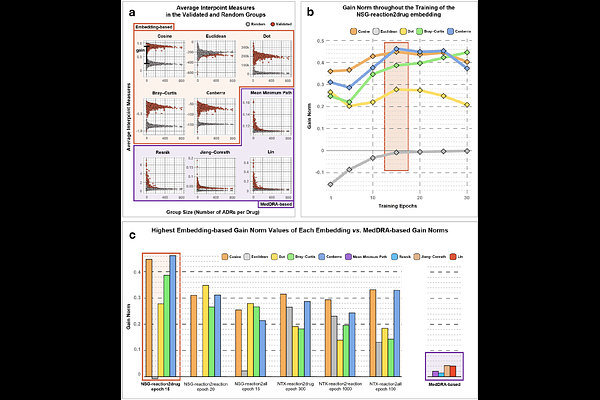Contrastive learning of adverse events to provide effective and interpretable vector representations for machine-assisted pharmacovigilance

Contrastive learning of adverse events to provide effective and interpretable vector representations for machine-assisted pharmacovigilance
Balogh, O. M.; Petervari, M.; Csernak, A. M.; Puhl, E.; Horvath, A.; Ferdinandy, P.; Agg, B.
AbstractPost-marketing surveillance is crucial for drug safety, yet the tools of pharmacovigilance rely solely on text-based data that may limit the applicability of contemporary machine learning methodologies. Here, we adapt contrastive learning algorithms to generate adverse event vector representations from spontaneous reports to serve as general machine-readable resources for pharmacovigilance applications. We present comprehensive analyses of the resulting representations through density-based clustering, semantic evaluation and comparison of multivariate dispersions, revealing patterns that reflect both functional and causal relations of the adverse events while also capturing drug-safety related information better than medical terminologies. Furthermore, we demonstrate the applicability of the representations as input features in our downstream model, outperforming the currently used reporting odds ratio method on drug-event causality prediction benchmarks (AUROC: 0.88 vs 0.75). As such, this is the first demonstration of an interpretable adverse event vector representation that can be utilized for training arbitrary models, enabling wider and more effective applications of machine learning in pharmacovigilance.